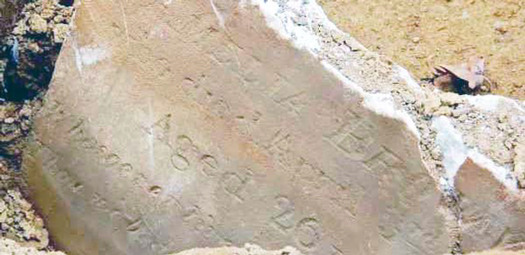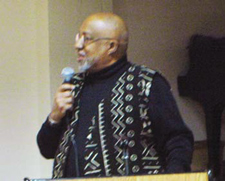
What's your opinion on this article?

An historic Black burial ground at the center of a preservation effort in Philadelphia.
|
The more than 200-year-old site, the Bethel Burial Grounds, is located at 4th and Catherine Street in Queen Village, a neighborhood south of downtown Philadelphia.

Joe Certaine wants historic Black burial ground in Philadelphia preserved. Photo: Jehron Muhammad
|
In addition to being the final resting place for many leaders of the city’s Black population, the burial site came to house many Blacks of limited means. The burial ground, rediscovered in recent years and designated a historical site by the Philadelphia Historical Commission in 2013, lies beneath the three-quarter-acre Weccacoe Recreation Center.
Purchased by Bishop Richard Allen, the site was an active burial ground until the 1860s. The AME Church—Black America’s oldest—likely because of financial reasons allowed the cemetery to fall into serious dilapidation in the latter part of the 19th century. The church eventually sold the land to the city in the late 1890s.
But before the sale, The Christian Recorder in 1872 called attention to the shameful condition of “the burial ground of Bethel Church.” Rubbish, broken barrels and lumber are dumped all over the graves, reported editor Bishop Benjamin Tucker Tanner.
After the sale the land remained undeveloped for 10 years and in 1904 and 1905 the property became a community garden. Forty truckloads of human and animal waste were dumped on the property to be used as fertilizer.
A public meeting that discussed the site—its historic significance, contemporary dilemma, and a potential commemoration—was recently held at the African American Museum of Philadelphia. Coming off of last year’s battle against the state of Pennsylvania’s Voter ID Law, former city managing director Joe Certaine called “on the Black community and our allies, to mobilize and join us in forming a united front in a campaign to permanently protect, preserve and commemorate an historic site containing the remains of 5,000 interred Black Philadelphians, who are the founders of our nation.”
Mr. Certaine’s group, the Friends of Bethel Burial Ground Coalition, called on the city of Philadelphia to suspend imminent renovations to recreation center because of potential threats to the historic burial ground beneath the Queen Village site.
Concerned about documented sinkholes and cave-ins, and the presence, and possible rupture, of a 180-year-old water main running beneath the street past the burial ground, the group met with Mayor Michael Nutter’s chief of staff, Everett Gillison, and requested that construction preparation be halted.
“Because the (burial ground) is public property, the executive, the mayor’s office, is the one that has control of this right now,” Mr. Certaine said March 1. “The goal here is to stabilize” the site, which he argued, “shouldn’t be a problem.”
Rep. Robert Brady (D-Penn.) also weighed in, sending a letter to the mayor in support of the coalition. “I am asking the city to rethink its current renovation plans, while taking into consideration the national historic importance of the property,” Congressman Brady wrote.
According to published reports, a spokesman for the city has confirmed “at this point, everything is suspended in terms of renovation work pending further discussions.”
Speakers at the meeting included historian Terry Buckalew, who said 2,228 individuals, including generations of the Laws and Ganges family, have been identified as buried at the site.
During Mr. Buckalew’s presentation he displayed a 1975 topographic map of the cemetery created by a city engineer that showed a massive sinkhole, 14 cave-ins, a nearly 200-year-old water main near the burial site, and “construction for past playground amenities in the mist of the graveyard,” reported the Philadelphia Inquirer.
In addition Mr. Buckalew said the sinkhole and cave-ins, “show a drainage pattern” affecting the burial ground.
“There is water running underneath that shouldn’t be there,” he said.
Mr. Certaine said the city has agreed to “freeze” all work connected with the recreation center. The coalition is urging replacement of the old water main, recognition of the site’s national historic status and appropriate commemoration of the burial ground, he added.
Mr. Certaine has taken issue with the city and surrounding neighborhood’s approach, which has been to defer to Mother Bethel Church on matters related to the burial ground.
Mother Bethel and the burial now sit in a majority White, upscale center city neighborhood with the majority of its Black parishioners from outside the area.
“This property, this burial ground has been treated as though it’s not public property owned by the citizens of Philadelphia,” said Mr. Certaine. “What authority does the city have to defer to anyone like this?”